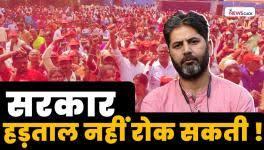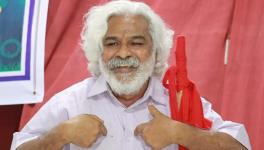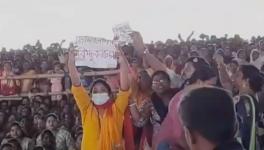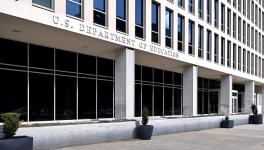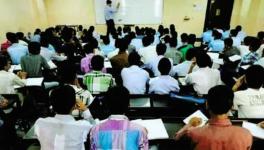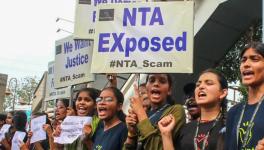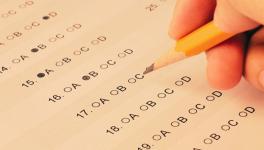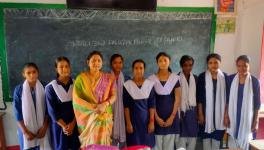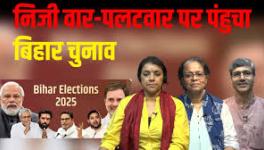Telangana: Education Gravely Neglected Under TRS Regime
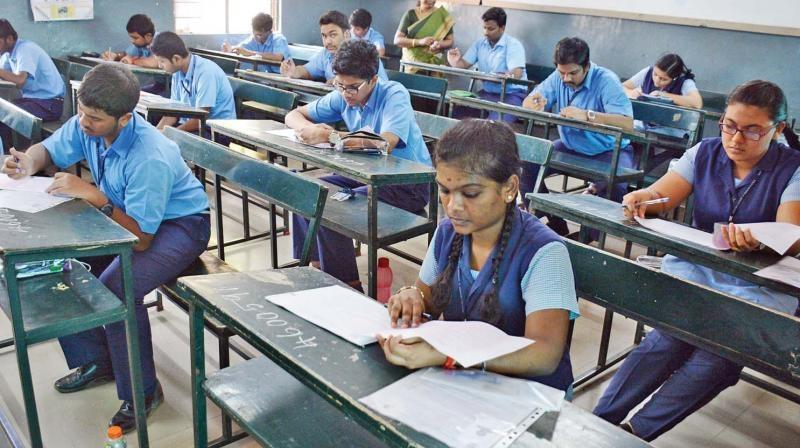
In the last four years, Telangana has witnessed a disappointing trend in the crucial education sector. Under K Chandrashekar Rao’s Telangana Rashtra Samithi regime, a CAG report released earlier this year has red flagged various aspects like utilisation of budget funds and non-implementation of the Right of Children to Free and Compulsory Education Act, 2009 (RTE Act).
In its manifesto for elections in 2014, TRS party promised free education from primary school to post-graduation and establishment of new universities in the state, besides other promises in this sector. While no measures were taken up by the government in that direction, the state government has failed in implementing the existing mandatory provisions, as various indicators given below show, leading to deteriorating education.
Expenditure on Education
During 2014-17, there was significant shortfall of about 50 percent in release of funds by both the central and state governments for the Sarva Shiksha Abhiyan programme, which is the key vehicle for implementation of the RTE Act, finds the CAG report.
Also Read: Telangana Elections: Triangular Fight?
The TRS government had gradually decreased its expenditure on education for both higher education and school education departments when compared to the total expenditure on general and social sectors. During 2014-15, while 16.56 percent expenditure was incurred for education compared to total expenditure, it declined to 13.8 percent during 2015-16 and further declined to 12.6 percent during 2016-17.
This resulted in non-implementation of important interventions for the benefit of students in the state. These included computer-aided education, training, academic support, interventions for children with special needs, community mobilisation, special training for mainstreaming of out of school children, learning enhancement programme and research evaluation monitoring and supervision.
Crumbling Infrastructure
As a result of lack of funds, a staggering number of infrastructure facilities remained incomplete, suggesting the poor condition of government schools in the state. As per the report, out of 91,199 sanctioned civil works related to physical infrastructure of schools, during 2001-02 to 2016-17, an aggregate of 21,564 works (24 percent) remained incomplete, of which 7,014 works are related to toilets and drinking water. This suggests that a large section of schools lack basic infrastructural facilities.
Private Schools favoured over Government Schools
The enrollment in government schools remained low compared to the private schools. In government primary schools, enrolment decreased by 1.12 lakh (7.65 per cent) during the period. On the other hand, in case of private primary schools, enrolment increased by 0.61 lakh (3.67 percent) during same period. Similarly, in case of upper primary schools, the number of government schools increased by only 2.89 percent whereas private upper primary schools registered a growth of 10.09 percent. However, the enrolment in government upper primary schools decreased by 0.20 lakh (2.13 percent), whereas enrolment increased by 0.03 lakh (0.38 percent) in private upper primary schools.
During the period of 2014-17, the number of government (including local bodies and aided) primary schools increased by only 0.42 percent whereas private primary schools increased by 12.75 per cent.
High Dropout rate of SC/ST Children
The children who enrolled during 2007-08 and 2008-09 in Class I should have continued up to Class VIII (Upper Primary level) during 2014-15 and 2015-16 respectively. However, CAG found that while the overall dropout rate at this level ranged from 28.93 percent (girls) to 31.93 percent (boys), for students from Scheduled Tribes, it was as high as 52.89 percent (boys) and 54.81 percent (girls) and for students from Scheduled Castes, it was as high as 32.58 percent (boys) and 31.38 percent (girls).
Also Read: ‘Bahujan Left Front is Providing an Alternative to TRS and Mahakutami’
Telangana government could not even establish a Child Monitoring System, a mandated rule under RTE Act. Without CMS, the government has been lacking behind in monitoring not only the academic progress of children in the schools, but also their retention, transition and migration.
25 Percent Reservation in Private unaided schools
Despite the provisions of RTE rules and previously existing government orders, the state government failed to implement 25 percent reservation to children from weaker sections and disadvantaged groups. While the government is obliged to reimburse the fees towards the children enrolled under this category, during 2014-17, it was found that the government did not incur any expenditure for this cause. This crucial provision of RTE is being implemented in several states - Bihar, Chhattisgarh, Delhi, Karnataka, Madhya Pradesh, Rajasthan, Tamil Nadu and Uttarakhand.
Evidently, the policies adhered by the TRS regime display a grave negligence from the government’s side, especially affecting the students from marginalised sections.
Get the latest reports & analysis with people's perspective on Protests, movements & deep analytical videos, discussions of the current affairs in your Telegram app. Subscribe to NewsClick's Telegram channel & get Real-Time updates on stories, as they get published on our website.










